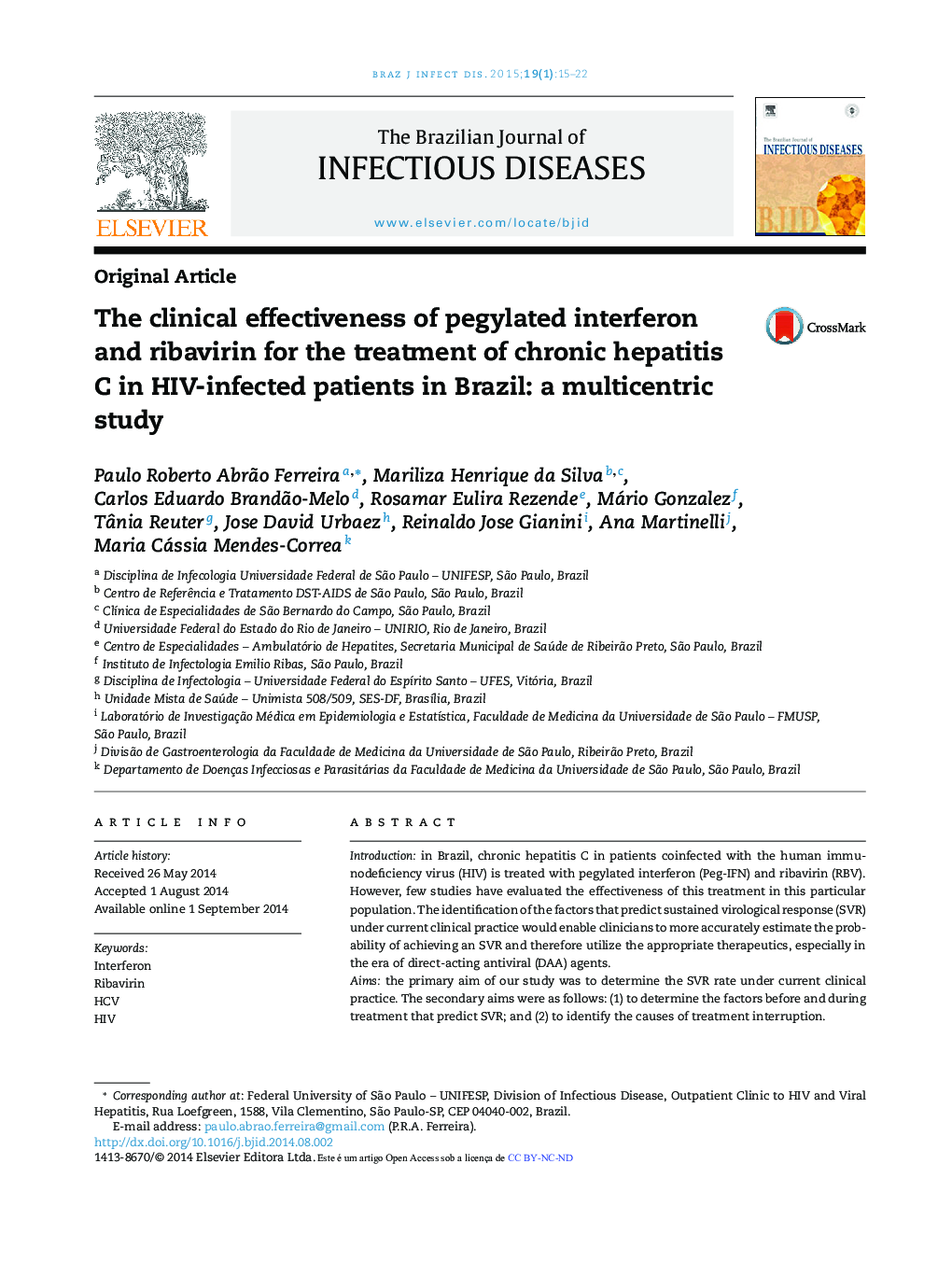| Article ID | Journal | Published Year | Pages | File Type |
|---|---|---|---|---|
| 3344000 | The Brazilian Journal of Infectious Diseases | 2015 | 8 Pages |
Introductionin Brazil, chronic hepatitis C in patients coinfected with the human immunodeficiency virus (HIV) is treated with pegylated interferon (Peg-IFN) and ribavirin (RBV). However, few studies have evaluated the effectiveness of this treatment in this particular population. The identification of the factors that predict sustained virological response (SVR) under current clinical practice would enable clinicians to more accurately estimate the probability of achieving an SVR and therefore utilize the appropriate therapeutics, especially in the era of direct-acting antiviral (DAA) agents.Aimsthe primary aim of our study was to determine the SVR rate under current clinical practice. The secondary aims were as follows: (1) to determine the factors before and during treatment that predict SVR; and (2) to identify the causes of treatment interruption.Methodswithin a cohort of HIV/hepatitis C virus (HCV)-coinfected patients in Brazil, we performed a retrospective analysis of those individuals treated with Peg-IFN and RBV.Resultsamong the 382 analyzed patients, SVR was observed in 118 [30.9% (95% confidence interval (CI): 26.3–35.8)], which included 25.9% (75/289) of the patients with genotypes 1 and 4 and 48.2% (41/85) of those with genotypes 2 and 3. After multivariate analyses the independent positive predictors for SVR after treatment for chronic hepatitis C with Peg-IFN and RBV were: absence of an AIDS-defining illness (p = 0.001), HCV viral load lower than 600,000 IU/mL at the onset of treatment (p = 0.003), higher liver enzyme levels (p = 0.039) at baseline, infection with genotypes 2 or 3 (p = 0.003), and no transient treatment interruption (p = 0.001).The treatment was interrupted in 25.6% (98/382) of the patients because of adverse events (11.3%, 43/382), virologic failure (7.8%, 30/382), and dropout (6.5%, 43/382). The main adverse events were cytopenia and psychiatric disorders.Conclusionsin our Brazilian case series, the SVR rate under current clinical practice conditions was similar to that reported in other studies. There was a correlation between an SVR and being infected by genotypes 2 and 3, low viral load, high ALT levels at the onset of treatment, and absence of an AIDS-defining illness. Cytopenia and psychiatric disorders were the major causes of treatment interruption. Efforts should be focused on optimizing management of side effects and counseling to improve adherence and to keep patients on treatment.
